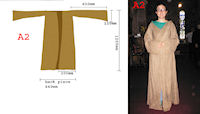
Figure 15: St Andrew's sackcloth worn by subject, showing dimensions
'But let man and beast be covered with sackcloth, and cry mightily unto God: yea, let them turn every one from his evil way, and from the violence that is in their hands' (Jonah 3).
Though used only once a year at Lent, if at all, by the medieval church (Arnold 2005, 172), sackcloth has been traditional penitential garb since the Old Testament, and was revitalised in the Scottish New Jerusalem such that it saw almost constant use (Smith 1966; Graham 1996). Many churches possessed different grades of cloth: linen for lesser sins, sackcloth for most sins and, finally, hairy cloth for the most severe offences (Todd 2002, 143-6). Likened to the baptismal gown, sackcloth was worn by the penitent who gave up their sinful ways in order to rejoin the body of Christ, into which baptism also initiates individuals (Smith 1966). Two sackcloths survive to modern times (Appendix Ia). In research the opportunity to wear one presented the possibility of a phenomenological approach (Fig. 15). Inconveniently long and a little itchy, the question of what other potential qualities sackcloth might have was posed.
As the narrative suggests, wet sackcloth would potentially be unpleasant, but this could also be true on clement days. Week after week and year after year penitents sweated into it and those accused of serious sins were sometimes pelted with rotten eggs, filth and mud or ducked in foul water (Graham 1996, 49, 138, 213). The Bible teaches that those unclean with sin will be destroyed (e.g. 1 Nephi 10:21). Repeated throughout both Testaments is the notion of the stench and uncleanliness of sin. Literal and biblical stenches may have emerged as a novel connection; serving to reinforce the idea of oneself as polluted and sinful. Alternatively, since sackcloth as punishment goes back to before the Old Testament, the association of sin with stench could have emerged from the sackcloth itself in antiquity and simply been reacquired.
One of the most interesting fieldwork experiences was the refusal of another archaeologist to try on the gown, his reason being that it still bore the negativity of sins and punishments, as well as more bodily emissions. The idea that the cloth could be seen in the past to carry non-physical pollutants is born out by Schneider's discussion of the spirituality of cloth (2006). Schneider demonstrates how cloth can symbolise and confirm statuses and relationships: a baptismal gown, a wedding dress, a funeral shroud; and how objects can have biographies of past 'owners'. Through shared use of the repentance gown and other discipline artefacts, disciplined individuals became part of a shared history, one of a list of 'owners' connected by their sinful nature, manifested in common association with the gown.
Stories of such owners are still accessible in the kirk session records, the sackcloth from West Calder, mid-Lothian, for example, worn almost weekly for six months in 1677 by Jonet Gothskirk (Johnston 1999, 92-4). Locals would have been familiar with their parish's artefact histories and their experience may have been influenced by how they felt about previous owners. Returning to the literality of the Scottish New Jerusalem, the sackcloth may have further blurred the boundaries between the Biblical past and the present, as biblical persona could also have constituted past owners. The sackcloth could, therefore, have been at once the restoration to currency of a biblical punishment and also a symbol that all those living with the Living Word were living in epic, Biblical times.
Choose your own | Jougs | Branks | Repentance Stool
© Internet Archaeology/Author(s)
University of York legal statements | Terms and Conditions
| File last updated: Thu May 26 2011